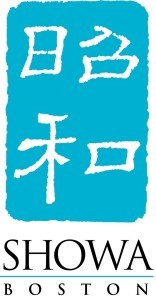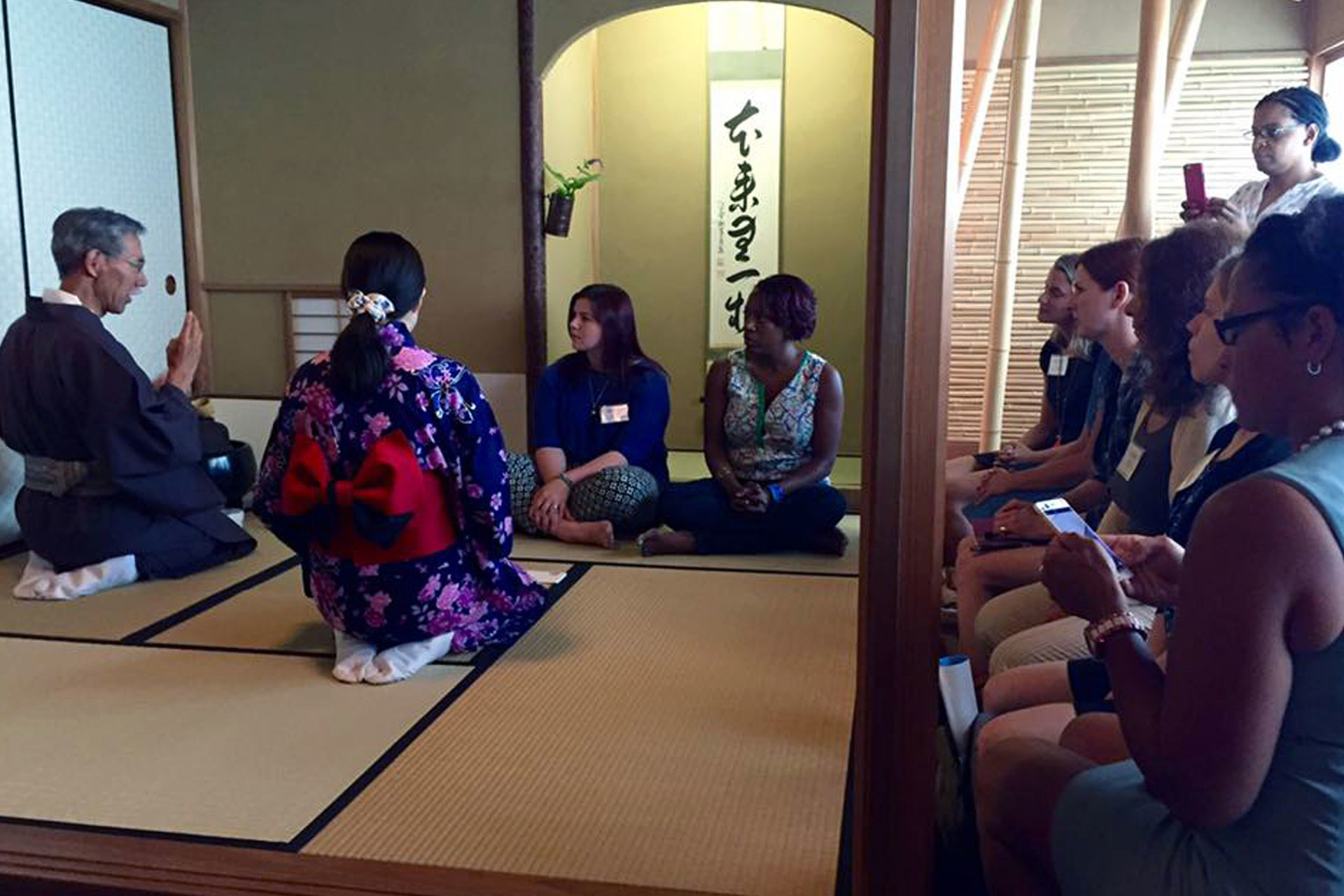Showa Boston Institute
- Address: 420 Pond St, Jamaica Plain, MA 02130
- Tags:
 What to do Boston,
Boston,
United States
What to do Boston,
Boston,
United States
- Telephone: (617) 522-008
Lovely place to learn Japanese in Boston
In my article, The best methods to learning a language, I talked about the overall best ways to learn a language. Here, I am going to specifically describe an excellent place in Boston where you can learn Japanese.
Struggling with self-taught Japanese
After learning Spanish in Spain, my goal now is to learn Japanese. Of course, I do plan to one day live in Japan and learn the language through immersion, but before that happens, I have to be practical and learn the basic and intermediate levels first so that I will not be completely lost.
Learning Japanese is nothing like learning a romance language: the latter shares many cognates with English and has the same Roman alphabet. Japanese, on the other hand, has three alphabets, hiragana, katakana and kanji, and these are all totally different from anything I already know.
Hiragana and katakana are both used to phonetically spell out words, and there exists one of each type of letter (hiragana and katakana, 47 characters each) for each Japanese sound. The difference between the two is that hiragana is used to represent Japanese words, while katakana is used to represent foreign words that are phonetically pronounced in a Japanese way.
Some hiragana and katakana letters are very similar (but not all), and the main way to tell the difference between the two is that katakana letters have more straighter-looking strokes, and hiragana letters look more curvy and curvilinear. Kanji, which is kind of based off of the Chinese alphabet, is totally different from hiragana and katakana. Rather than representing individual letters and sounds, Kanji characters represent entire words, concepts and sometimes even phrases.
All of this sounds extremely overwhelming, especially for those (as myself) who only have to worry about 26 letters in their alphabet. I had start learning just the hiragana alphabet when I decided to teach myself Japanese many years ago. I was not very consistent in my learning methods, and I ended up not completing my goal.
Sure, I have learned the very basics through online tools, and as I mention in this previous post, I have picked up a lot of vocabulary words and random phrases through the anime shows that I watch in Japanese with Spanish subtitles (top nerd).
Still, it was not enough to actually understand or be able to converse in Japanese. After being frustrated for many years for not having learned more Japanese on my own, I decided it was time to sign up for a real class. I searched and found my answer. There is a perfect school to learn Japanese in Boston.
The Showa Institute of Boston

This school, located in Jamaica Plain in Boston, Massachusetts, is a sister school to a university in Japan where female Japanese students of all ages are able to come here for a fixed amount of time to take classes and improve their English. On the flipside, non-Japanese people can come to the campus to meet with Japanese students and create a cultural and language exchange. At certain times of the year, the Japanese students will put together events or shows open to the public to see and participate in.
Events and festivals
When I was a younger kid in middle school, I was just as crazy about Japanese culture as I am now, and I was so enthusiastic about learning more and meeting with Japanese people. One year when I was around 15, my mother took me to a spring festival that was held at Showa in which the students came together and set up different stations around the campus to teach foreigners about several parts of their culture.
For example, there was one station showing people how to put on traditional kimonos. Another station was dedicated to exhibiting Miyazaki films. Another station was set up to show people about calligraphy, and there was one station set up for displaying ikebana, the Japanese flower arrangements. I remember feeling so excited and emotional about this event, and I wanted to hug everyone there but I stayed chill and pretended to look normal.
Culture exchange opportunities
While I was there, I introduced myself to some Japanese girls and they were very kind. We decided to become culture exchange partners, which means that we traded emails and we could practice speaking English with them. We set up a time to meet, and my parents invited them to my home so that we could serve them an "American-style lunch" and they could experience a day with an American family. They brought some Japanese gifts (which I still have) and they told us about Japanese culture and traditions at the table.
I still have the email and Facebook information of one of the girls who came over. Her name is Natsuki. We used to stay in touch for a while after she went back to Japan, but we slowly broke off the connection. I would like to reconnect with her, because she was one of the kindest people I have met. I hope to visit her in her hometown when I finally decide to go to Japan.
Beautiful location and facilities
Showa Women’s Institute is located atop a beautiful grassy hill in Jamaica Plain, a suburb of Boston, and it overlooks the Boston city skyline.

The campus is a perfect distance from Boston; it is far enough to be in a quiet, green location while enjoying the view of the city, and it is close enough to be able to conveniently hop into the downtown by bus within 15 minutes. Besides the classrooms, dormitories and cafeteria, this campus contains a small Japanese garden and teahouse, keeping with it’s Japanese culture and traditions.

Japanese language classes
Another thing that Showa offers to non-Japanese people is Japanese classes. For twenty classes, which are spaced out to one class per week for five months, you pay only $330. Japanese students sometimes come to the class to help, and may even offer to be become a language exchange partner with you so that she can practice English too.
I think this is a very good deal, which is why I signed up for it. Instead of starting the class at the level one class, I took a risk and jumped up to the level two class. This requires a lot of effort on my part to make sure I study and know all of level one’s lessons from the textbook, which I had bought a few weeks before the class started.

This is the textbook I bought for the class, however I realized something very important after I bought it. There are two versions of this book: The kana version and the romanized version. The kana version means that the entire book's phrases, vocabulary words and lessons are written in the Japanese alphabets, and the romanized version is written instead in the English alphabet.
For someone who wants to learn spoken Japanese quickly, the romanized version is best, but for those who want to thoroughly learn how to read and write, I strongly recommend the kana version. I wish I knew about this difference before buying the book, otherwise I probably would have bought the kana version. This does not mean that I am not learning from the romanized version; on the contrary I believe that I greatly benefitted from using this version in my crash studying before entering the level two class because it's like a shortcut.
On the other hand, I am very behind the other students in the class with my reading and writing skills. This will come with time and practice, but at least having the kana version would prevent me from "cheating" my way through learning new phrases and vocabulary words by just reading them in the English alphabet.
Either way, I can confidently say that I have learned a lot in the Japanese Language Classes at Showa. After just one class, I realized that to effectively learn a language, one must take classes and/or be exposed to a native speaker who is speaking to you in that language and requires you to reply correctly. This is something that cannot be done by using an online learning tool or app.
Level up!
My next step to perfect my Japanese language is to do what I did with Spanish: Move to Japan and immerse myself in the language and culture. I cannot wait to do this and have new adventures.
If you are also interested in learning a new language, the most important things that you have to do are:
- Make time for it.
- Set aside some money for it.
Sure, you can learn for free and find a conversation partner. But as a very undisciplined person, I needed a push, and that’s why I invested money in a class where I knew I would be given homework and the teacher would have expectations of me to study and work harder than if I studied on my own.
Also, sometimes having only a conversation/language exchange partner is not enough. Sometimes the plan can fall through, a person can cancel and the meetings may not be as consistent as you want them to be. If you are paying for a class however, you will not want to waste your hard-earned money, and you will be sure to attend that class no matter what it takes. It is a set schedule, and you either use it or you lose it.
Finally, the best time and money investment that you can do to learn a language is to travel to a country where it is spoken and get out of your comfort zone.
Photo gallery
Content available in other languages
Rate and comment about this place!
Do you know Showa Boston Institute? Share your opinion about this place.


















